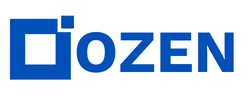Zemax STAR Module Tips for Engineers
In this video, we will demonstrate the Zemax demo. For this demo, we use the paper available in our knowledge base article on the Zemax website. You can download the file from there.
Workflow Overview
Here is the workflow that I showed in my previous videos:
- Open the Zemax file.
- Analyze different parts of the file:
- Surface
- Coordinate break
- Mirror
- Other lenses
- Analyze the image at the final point to observe structural and thermal deformation due to high-power laser effects.
Results
We want to see the structural and thermal deformation effects on the optical design. The results include:
- Spot diagram
- Wavefront error
- RMS spot size
Optimization and tolerance analysis are required to achieve these results. Note that some symbols, like V, are used as variables.
Using Zemax Enterprise Version
To import structural and thermal deformation data, access the Zemax Enterprise version. In this version, you will find a STAR tab with options like:
- Multi-physics data viewer
- Multi-physics data loader
You can view data for different surfaces, such as surface 4, to see deformation. The deformation data includes:
- Surface deformation
- Volumetric data related to temperature
Data Import and Analysis
To import multi-physics data:
- Load the data from a folder, e.g., surface 7, level 3.
- Open the software security settings and add modes, such as orange and blue for model A.
- Observe surfaces 9 to 15 for structural deformation and temperature data.
- Apply the settings and wait for the multi-physics file to load.
After loading, you can compare the effects of structural and thermal deformation on:
- Wavefront map
- Spot diagram
- RMS spot radius
Performance Analysis
In the performance analysis, you can choose to:
- Ignore volumetric data to focus on structural deformation.
- Ignore deformation to see the ideal case without structural or thermal deformation.
- Include deformation without rigid body motion.
Surface 4, which is a mirror, is crucial for optimization and requires attention to structural and thermal effects.
Conclusion
We hope this video is helpful. If you have any questions about modeling surface structural or thermal effects in your optical system, please reach out to us. Thank you.
Next, we will show the Zemax demo. For the Zemax demo, we will use the paper from our knowledge base article on the Zemax website. You can download the file here.
Here is the workflow: 1. Open the Zemax file. 2. In the Zemax file, we have different parts: the surface, a coordinate break, our mirror, other lenses, and the image we want to analyze. 3. We want to analyze the image at this point for structural and thermal deformation because, with high power lasers, the effect of temperature and structural deformation is important for the optical design. 4. Here is our spot diagram, wavefront, and RMS. 5. To get these results, we need to do optimization and tolerance analysis. 6. To import structural and thermal deformation, you need to access the Zemax Enterprise version. 7. In the Zemax Enterprise version, you will see a STAR tab with options like Multi-Physics Data Viewer and Multi-Physics Data Loader. 8. You can view your data, such as the deformation of the mirror. 9. Now, you can import your data and see the surface deformation tabs and volumetric data. 10. You can load the data and go to the Surface 7 Level 3 to see the features. 11. You can open the software security settings and see the Add Mode. 12. You will see Surface 9, Surface 10, Surface 11, Surface 12, Surface 13, Surface 14, and Surface 15 for structural deformation and temperature. 13. Surface 10 has temperature data. 14. Now, you can see how the wavefront map, spot diagram, and RMS change. 15. You can compare the defect effect of structural and thermal deformation. 16. In the performance analysis, you can see the surface war, which is important for optimization. 17. You should take care of this surface for structural thermal effects.
I hope this video can be helpful for you. If you have any questions about modeling surfaces for structural thermal effects or your optical system, please reach out to us. Thank you.


